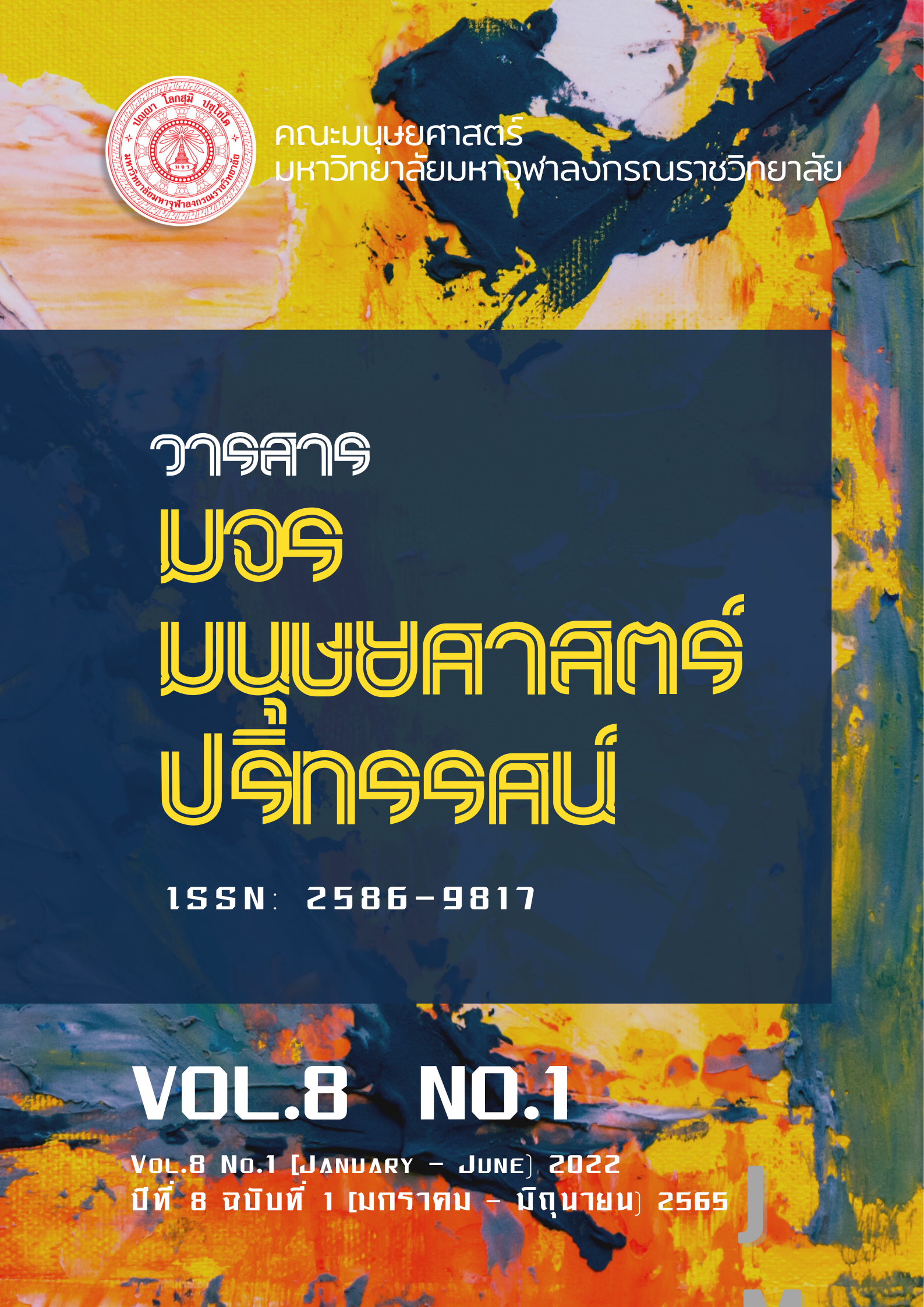โปรแกรมพุทธจิตวิทยาพัฒนาความเข้มแข็งทางจิตใจของสามเณร นักเรียนนักธรรม บาลี โรงเรียนพระปริยัติธรรม ในเขตบางพลัด กรุงเทพมหานคร
คำสำคัญ:
พุทธจิตวิทยา, ความเข้มแข็งทางจิตใจ, โรงเรียนพระปริยัติธรรม, สามเณรบทคัดย่อ
งานวิจัยนี้มีวัตถุประสงค์ คือ 1) เพื่อศึกษาสภาพความเข้มแข็งทางจิตใจของสามเณร นักเรียนนักธรรม บาลี โรงเรียนพระปริยัติธรรม 2) เพื่อสร้างโปรแกรมพุทธจิตวิทยาพัฒนาความเข้มแข็งทางจิตใจของสามเณร นักเรียนนักธรรม บาลี โรงเรียนพระปริยัติธรรม และ 3) เพื่อศึกษาผลการใช้โปรแกรมฯ ในเขตบางพลัด กรุงเทพมหานคร เป็นการวิจัยแบบผสมวิธี สัมภาษณ์ผู้ให้ข้อมูลสำคัญเกี่ยวกับสภาพความเข้มแข็งทางจิตใจของสามเณร ทดลองใช้อบรมสามเณร 30 รูป ติดตามประเมินความเข้มแข็งทางจิตใจของสามเณรหลังการทดลองไปแล้ว 15 วัน วิเคราะห์ข้อมูลเชิงเนื้อหา และข้อมูลเชิงประมาณด้วยสถิติ ประกอบด้วย ค่าร้อยละ ค่าเฉลี่ย ค่าเบี่ยงเบนมาตรฐาน และค่า T-Value (t-test)
ผลการวิจัยพบว่า
- 1. สภาพความเข้มแข็งทางจิตใจของสามเณร ถูกลดทอนด้วยปัญหา คือ 1) การปรับตัวต่อสภาพสังคมใหม่ 2) การเรียนภาษาบาลีเป็นเรื่องยาก เอาใจใส่ในการเรียนน้อย 3) บางรูปไม่กล้าแสดงออก ไม่ยอมตอบคำถาม 4) ไม่ค่อยแสดงออกถึงการใช้ความคิดในการแก้ปัญหาต่าง ๆ 5) การถามอะไรแล้วไม่ค่อยพูด
- 2. สร้างโปรแกรมพุทธจิตวิทยาพัฒนาความเข้มแข็งทางจิตใจของสามเณร โดยบูรณาการหลักจิตวิทยาด้านการพัฒนาจิตใจ และพละ 5 ออกแบบการฝึกตามหลักไตรสิกขา ประกอบด้วย 9 กิจกรรม
- 3. ผลการทดลองใช้ พบว่า ความเข้มแข็งทางจิตใจของสามเณรหลังการทดลองสูงกว่าก่อนการทดลอง อย่างมีนัยสำคัญทางสถิติที่ระดับ .05
- 4. การติดตามผล พบว่า สามเณรกล้าที่จะพัฒนาตัวเองและมีคุณค่ามากขึ้น สามารถยอมรับความจริงของชีวิต เข้าใจธรรมชาติของตนเองและผู้อื่น เกิดกำลังใจที่จะมุ่งสู่เป้าหมายชีวิตและพยายามให้สำเร็จ
5. องค์ความรู้ที่เกิดจากการพัฒนาความเข้มแข็งทางจิตใจของสามเณร ทำให้สามเณรเกิดคุณลักษณะ ดังนี้ 1) ด้านการตระหนักรู้คุณค่าในตนเอง 2) ด้านการพัฒนาตนเอง 3) ด้านความสัมพันธ์ที่ดีกับบุคคลอื่น 4) ด้านการมีเป้าหมายในชีวิต
เอกสารอ้างอิง
กาญจน์สุนภัส บาลทิพย์ และคณะ. (2559). การพัฒนารูปแบบการใช้แนวคิดเป้าหมายในชีวิตและปรัชญาของเศรษฐกิจพอเพียงเพื่อการสร้างเสริมสุขภาพแบบองค์รวมของวัยรุ่นไทย. วารสารพยาบาลสงขลานครินทร์, 36(3), 111-127.
กรมสุขภาพจิต, (2552). แนวทางการดูแลเฝ้าระวังโรคซึมเศร้าระดับจังหวัด. กรุงเทพฯ : โรงพิมพ์ชุมนุมสหกรณ์การเกษตร แห่งประเทศไทย.
บุญชม ศรีสะอาด. (2535). หลักการวิจัยเบื้องต้น (พิมพ์ครั้งที่ 3). กรุงเทพฯ : สุวีริยาสาสน์.
ประเวช ตันติพิวัฒนสกุล. (2550). คู่มือการจัดกิจกรรมการสร้างความเข้มเเข็งทางใจสำหรับบุคลากรสาธารณสุข. กรุงเทพฯ : โรงพิมพ์ชุมนุมสหกรณ์การเกษตรเเห่งประเทศไทย.
“______”. (2551). คู่มือจัดกิจกรรมการสร้างความเข้มแข็งทางใจ สำหรับบุคลากรสาธารณสุข. กรุงเทพฯ : สถาบันราชานุกูล.
พระพรหมคุณาภรณ์ (ป.อ.ปยุตฺโต), (2550). ความสำคัญของพระพุทธศาสนาในฐานะศาสนาประจำชาติ (พิมพ์ครั้งที่ 12). กรุงเทพฯ : บริษัทสหธรรมิก.
พระธรรมปิฎก (ป.อ. ปยุตฺโต). (2553). ทศวรรษธรรมทัศน์พระธรรมปิฎกหมวดศึกษาศาสตร์. กรุงเทพฯ : ธรรมสภา.
พิธพิบูลย์ กาญจนพิพิธ. (2555). การศึกษาวิถีชีวิตการดำรงสมณเพศของสามเณรในวัดเขตกรุงเทพมหานคร (รายงานการวิจัย). กรุงเทพฯ : โรงพิมพ์มหาจุฬาลงกรณราชวิทยาลัย.
พัชรินทร์ นินทจันทร์. (2558). ความแข็งแกร่งในชีวิต: แนวคิด การประเมิน และการประยุกต์ใช้. กรุงเทพฯ : สำนักพิมพ์จุดทอง.
สุนทร บุญสถิต. (2543). สถานภาพ บทบาท และปัญหาของสามเณรในสังคมไทย (ปริญญาอักษรศาสตร์มหาบัณฑิต). มหาวิทยาลัยมหิดล : กรุงเทพฯ.

ดาวน์โหลด
เผยแพร่แล้ว
รูปแบบการอ้างอิง
ฉบับ
ประเภทบทความ
หมวดหมู่
สัญญาอนุญาต
ลิขสิทธิ์ (c) 2022 วารสาร มจร มนุษยศาสตร์ปริทรรศน์

อนุญาตภายใต้เงื่อนไข Creative Commons Attribution-NonCommercial-NoDerivatives 4.0 International License.





